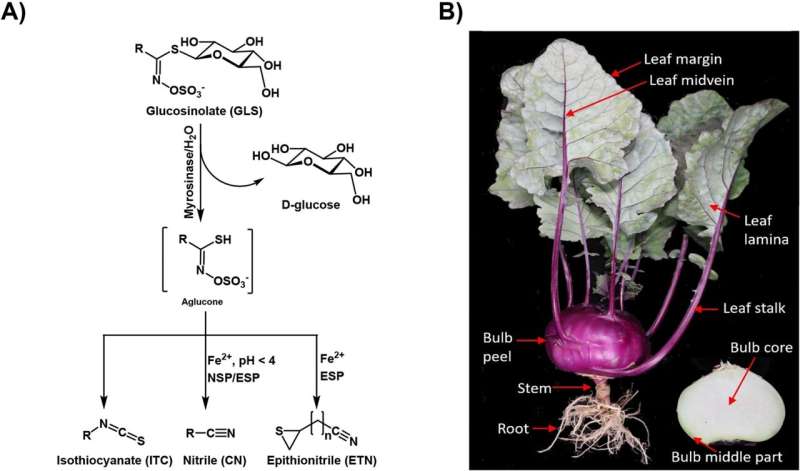Tissue-Specific Breakdown of Glucosinolates in Kohlrabi Reveals Path to Enhanced Health and Pest Resistance

Berlin, Germany - A groundbreaking study published in Food Chemistry has uncovered the tissue-specific degradation of glucosinolates, a class of health-promoting plant compounds found in kohlrabi. Researchers at the Leibniz Institute for Vegetable and Ornamental Crops (IGZ) have shed new light on how these bioactive molecules are broken down within different organs of the kohlrabi plant.
Conducted by a research team at IGZ, the study exposed myrosinase, an enzyme responsible for catalyzing the breakdown of glucosinolates, under varying conditions in various kohlrabi tissues, including leaves, stems, and bulb layers. The findings reveal a tissue-specific control mechanism for the conversion of these molecules, with implications for enhancing the health benefits and pest resistance of kohlrabi.
According to the study's authors, myrosinase enzyme activity is present in leafy tissues and inner bulb, resulting in the formation of nitriles - less bioactive breakdown products. In contrast, specific conditions found in the stem and root sections led to an increased production of isothiocyanates, a group of compounds known for their antioxidant properties.
The researchers used advanced chromatographic and mass spectrometric techniques to analyze the composition of glucosinolates and the resulting breakdown products in different tissue types. The study's insights have profound implications for breeding and processing kohlrabi, as well as Brassica vegetables more broadly, with targeted cultivation and adapted processing potentially yielding enhanced nutritional benefits.
"We hope that our findings will provide a solid foundation for developing effective breeding strategies focused on bioactivity and pest resistance," said Kudzai Gracious Mbudu, lead researcher at IGZ. "Further research into the role of specifier proteins in the plant's response to environmental factors could further enhance our understanding of this critical mechanism."
